The Merge Equal Cells transformation merges adjacent cells that contain identical / equal values. It can be applied to merge equal cells in the entire table or in specific rows or columns. Both horizontally and vertically adjacent cells can be merged. The transformation also merges adjacent spanned cells that contain identical values.
If two equal cells appear from merging other cells, they are also merged. The transformation repeats the merging process until there are no more cells to merge.
Note: The cells must be adjacent to one another in the table before they can be merged. This means that additional transformations, such as Standard Sorting, may need to be applied to position the cells next to each other so they can be merged.
Prerequisites
The instructions in this topic assume that you have already added the Merge Equal Cells transformation to your table by following the instructions in the Add a Transformation to a Table or Table Type subsection of the Table Transformations topic here.
Example
Before
This is how the table appears before applying the Merge Equal Cells transformation:
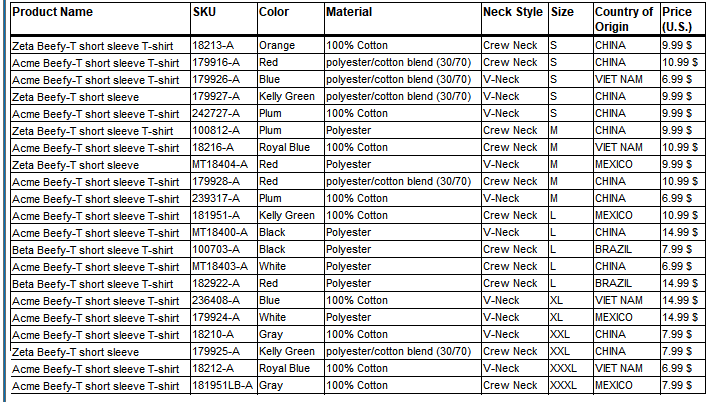
After
This is how the table looks after.
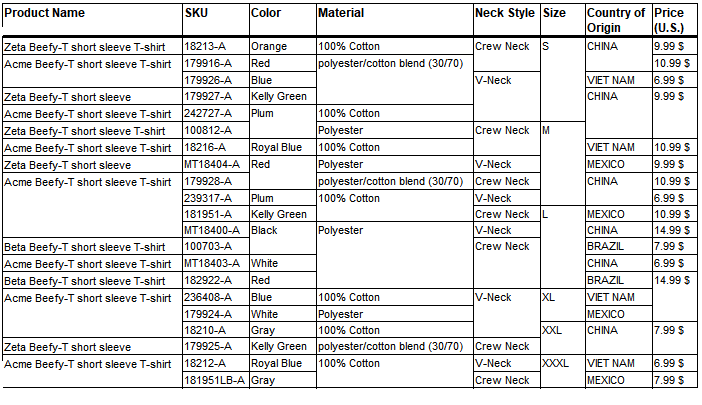
Steps
- After adding the transformation, the identical cells that are adjacent to one another will automatically merge.
- If you want to limit the cells that are merged to specific rows or columns, click the ellipsis button (
 ) under Parameters to launch the Merge Equal Cells dialog.
) under Parameters to launch the Merge Equal Cells dialog.
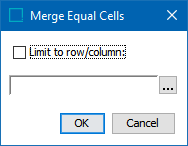
- Check Limit to row/column to apply the transformation to a specific row or column only, then click the ellipsis button (
 ) to launch the Select Row/Column dialog.
) to launch the Select Row/Column dialog.
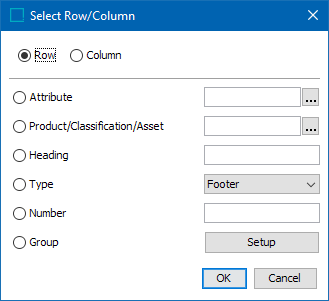
- Select Attribute to apply the transformation to the row or column that contains the specified attribute. Click the ellipsis button (
 ) to search or browse for the relevant attribute.
) to search or browse for the relevant attribute. - Select Product/Classification/Asset to apply the transformation to the row or column that contains the specified object. Click the ellipsis button (
 ) to search or browse for the relevant object.
) to search or browse for the relevant object. - Select Heading to identify the row or column by typing the header text of the relevant row or column.
- Select Type to choose a specific row or column type from the dropdown list.
- Select Number to identify the row or column by entering the sequence number. For example, to apply the transformation to the third column, type 3.
- Select Group to apply the transformation to a group of rows / columns and/or a range of row / columns, then click the Setup button.
- Click Add in the Select Row/Columns to be grouped dialog to add rows or columns to the group individually.

After clicking Add, either a Row or Column field displays, depending on whether you are selecting a row or column. Click the ellipsis button ( ) to launch another Select Row/Column dialog. This is identical to the previous 'Select Row/Column' dialog, except without the Group option. Click OK after making your selection.
) to launch another Select Row/Column dialog. This is identical to the previous 'Select Row/Column' dialog, except without the Group option. Click OK after making your selection.
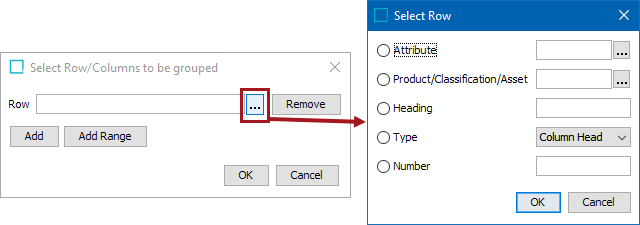
Click Add again on the 'Select Row/Columns to be grouped' dialog to repeat the previous steps and add more columns to the group. Click OK when done.
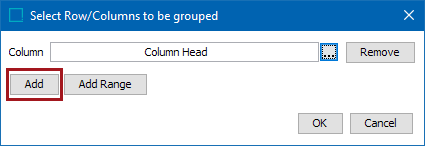
- To add a Range of columns to the group, click Add Range.
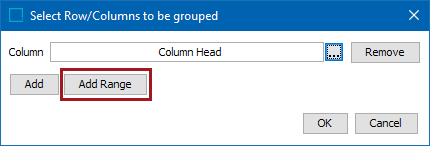
Enter the starting and ending column numbers in the Column From and To fields, then click OK when done. To enter a range that will contain the remainder of the table if rows or columns are added later, enter a large number in the 'To' field such as 5999. Note that these fields can only contain integer values.
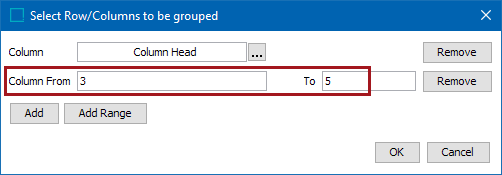
- Click OK when complete.